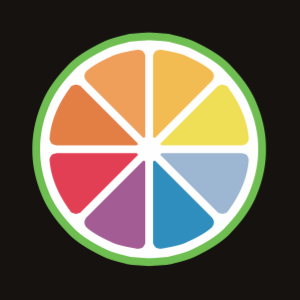
Beatmatching or pitch cue is a disc jockey technique of pitch shifting or time stretching an upcoming track to match its tempo to that of the currently playing track, and to adjust them such that the beats are synchronized—e.g. the kicks and snares in two house records hit at the same time when both records are played simultaneously. Beatmatching is a component of beatmixing which employs beatmatching combined with equalization, attention to phrasing and track selection in an attempt to make a single mix that flows together and has a good structure.
Windows Media Audio (WMA) is a series of audio codecs and their corresponding audio coding formats developed by Microsoft. It is a proprietary technology that forms part of the Windows Media framework. WMA consists of four distinct codecs. The original WMA codec, known simply as WMA, was conceived as a competitor to the popular MP3 and RealAudio codecs. WMA Pro, a newer and more advanced codec, supports multichannel and high-resolution audio. A lossless codec, WMA Lossless, compresses audio data without loss of audio fidelity. WMA Voice, targeted at voice content, applies compression using a range of low bit rates. Microsoft has also developed a digital container format called Advanced Systems Format to store audio encoded by WMA.
New Technology File System (NTFS) is a proprietary journaling file system developed by Microsoft. Starting with Windows NT 3.1, it is the default file system of the Windows NT family. It superseded File Allocation Table (FAT) as the preferred filesystem on Windows and is supported in Linux and BSD as well. NTFS reading and writing support is provided using a free and open-source kernel implementation known as NTFS3 in Linux and the NTFS-3G driver in BSD. By using the convert command, Windows can convert FAT32/16/12 into NTFS without the need to rewrite all files. NTFS uses several files typically hidden from the user to store metadata about other files stored on the drive which can help improve speed and performance when reading data. Unlike FAT and High Performance File System (HPFS), NTFS supports access control lists (ACLs), filesystem encryption, transparent compression, sparse files and file system journaling. NTFS also supports shadow copy to allow backups of a system while it is running, but the functionality of the shadow copies varies between different versions of Windows.

Soulseek is a peer-to-peer (P2P) file-sharing network and application, used mostly to exchange music. It was created by Nir Arbel, an Israeli programmer from Safed.
RAR is a proprietary archive file format that supports data compression, error correction and file spanning. It was developed in 1993 by Russian software engineer Eugene Roshal and the software is licensed by win.rar GmbH. The name RAR stands for Roshal Archive.
StuffIt is a discontinued family of computer software utilities for archiving and compressing files. Originally produced for Macintosh, versions for Microsoft Windows, Linux (x86), and Sun Solaris were later created. The proprietary compression format used by the StuffIt utilities is also termed StuffIt.
Software versioning is the process of assigning either unique version names or unique version numbers to unique states of computer software. Within a given version number category, these numbers are generally assigned in increasing order and correspond to new developments in the software. At a fine-grained level, revision control is used for keeping track of incrementally-different versions of information, whether or not this information is computer software, in order to be able to roll any changes back.
HFS Plus or HFS+ is a journaling file system developed by Apple Inc. It replaced the Hierarchical File System (HFS) as the primary file system of Apple computers with the 1998 release of Mac OS 8.1. HFS+ continued as the primary Mac OS X file system until it was itself replaced with the Apple File System (APFS), released with macOS High Sierra in 2017. HFS+ is also one of the formats supported by the iPod digital music player.

Module file is a family of music file formats originating from the MOD file format on Amiga systems used in the late 1980s. Those who produce these files and listen to them form the worldwide MOD scene, a part of the demoscene subculture.
The following tables compare general and technical information for a variety of audio coding formats.

Prosoniq Products Software was a German software developer of audio and music tools, mostly known for their sonicWORX, OrangeVocoder, TimeFactory and Hartmann Neuron synthesizer products. It also licensed proprietary technologies in the audio/music DSP sector to software manufacturers including Emagic, Steinberg, Digidesign, TwelveTone Systems, Merging, DAVID, AutoDesk/Discreet and others. Headquartered in Karlsruhe, Germany, Prosoniq pioneered the use of artificial neural networks for commercial audio processing.
Harmonic mixing or key mixing is a DJ's continuous mix between two pre-recorded tracks that are most often either in the same key, or their keys are relative or in a subdominant or dominant relationship with one another.

Ali Shirazinia, commonly known by his stage name Dubfire, is an Iranian American house and techno DJ and producer. Prior to his solo career, Dubfire made up half of the duo Deep Dish. Dubfire's style is noticeably different from that of Deep Dish, consisting of techno rather than progressive house.

Global Underground 031: Dubfire, Taipei is a DJ mix album in the Global Underground series, compiled and mixed by DJ and producer Ali "Dubfire" Shirazinia, one half of progressive house duo Deep Dish. Dubfire's release follows that of his Deep Dish collaborator, Sharam's solo mix, Global Underground 029: Dubai. Previously, Deep Dish have mixed Global Underground 021: Moscow and Global Underground 025: Toronto, along with Afterclub Mixes. With Taipei, Dubfire sought to make the album about more who he is, as opposed to Deep Dish.

djay is a digital music mixing software program for Mac OS X, Microsoft Windows, iPad, iPhone, and iPod Touch created by the German company algoriddim. It allows playback and mixing of digital audio files with a user interface that tries to simulate the concept of "two turntables and a microphone" on a computer. Before the commercial release in November 2007, djay had initially been released as freeware in June 2006. In December 2010 the software was also released for the iPad, and subsequently for iPhone and iPod Touch in March 2011.

JUCE is an open-source cross-platform C++ application framework, used for the development of desktop and mobile applications. JUCE is used in particular for its GUI and plug-ins libraries. It is dual licensed under the GPLv3 and a commercial license.
Reason Studios is a music software company, based in Stockholm, Sweden. Founded in 1994, it develops the studio emulation digital audio workstation Reason.
Rapid Evolution is a software tool for DJs, providing filtering and searching features suitable for musicians. It can analyze audio files and automatically determine properties such as the musical key, beats per minute (BPM), beat intensity and ReplayGain.
beaTunes is a commercial software package for Microsoft Windows and Mac OS X, developed and distributed by tagtraum industries incorporated. The software has a free trial and costs $34.95.

Opus is a lossy audio coding format developed by the Xiph.Org Foundation and standardized by the Internet Engineering Task Force, designed to efficiently code speech and general audio in a single format, while remaining low-latency enough for real-time interactive communication and low-complexity enough for low-end embedded processors. Opus replaces both Vorbis and Speex for new applications, and several blind listening tests have ranked it higher-quality than any other standard audio format at any given bitrate until transparency is reached, including MP3, AAC, and HE-AAC.









